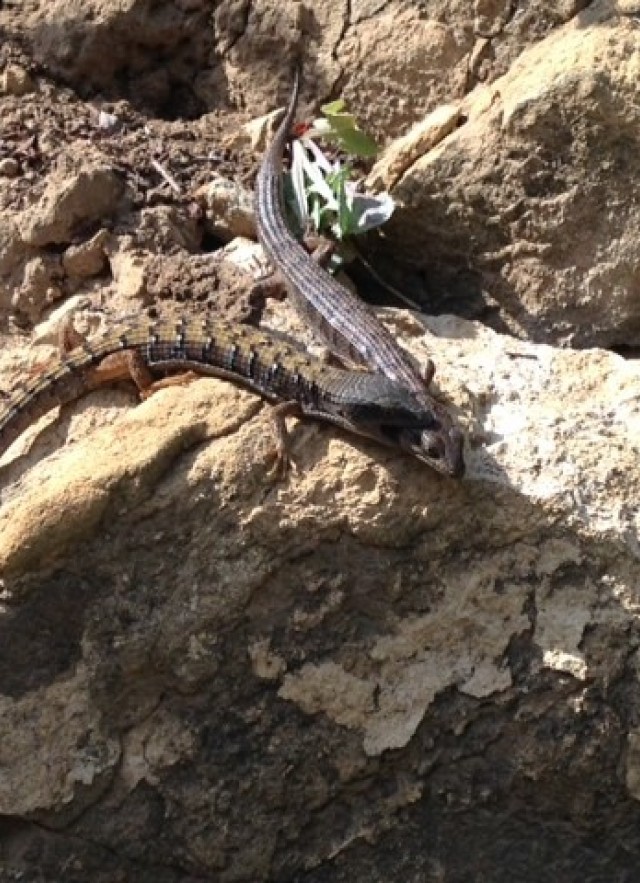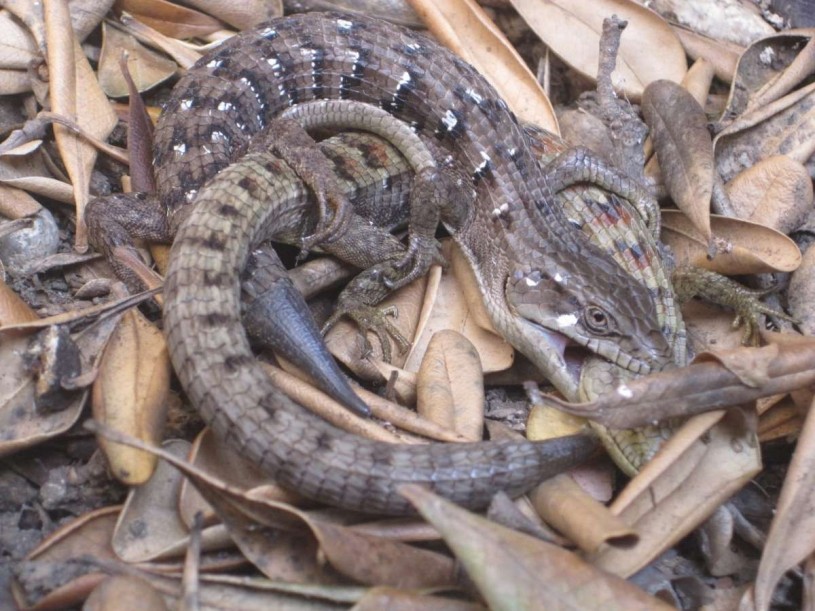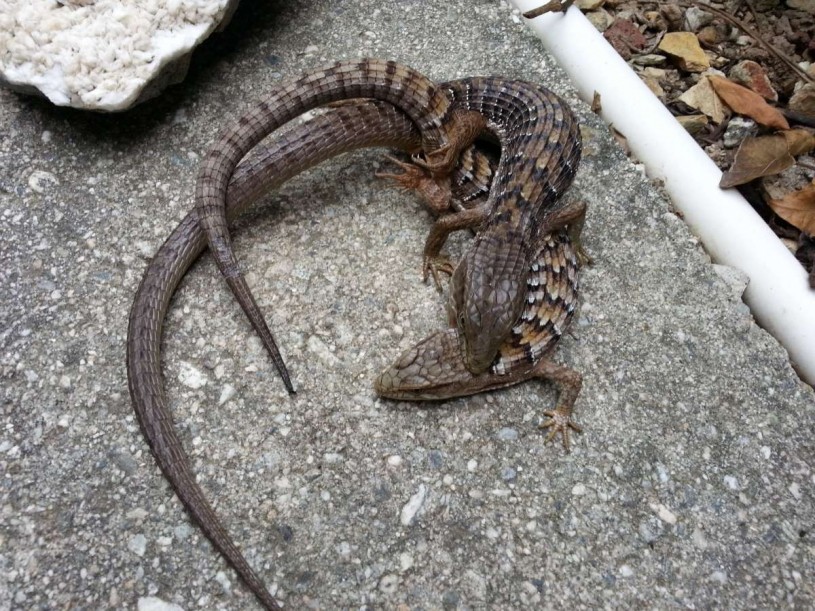Lizard Love Bites
Have you recently seen lizards in L.A. that appear to be biting each other, or maybe they are trying to eat each other?

If you have, you are not alone. Citizen scientist, Diana Beardsley, saw these two in her lizard-filled backyard and sent us this picture. It became the latest data point in our Reptiles and Amphibians of Southern California project (RASCals) which helps us understand the state of urban lizard populations. It also helped us realize a pattern!
Diana was not the only one to send us a picture of one lizard biting another. Many of the people who sent us these pictures were not sure exactly what they were witnessing–were they fighting, trying to eat each other, or doing something else entirely?
Turns out it was something else.
What looks like a fight between two lizards, is actually a form of lizard courtship, a lizard love bite if you will. Museum herpetologist, Dr. Greg Pauly says, "male alligator lizards bite the female behind the head during mating, which holds her in place until she is ready." Lizards have been observed in this position for a long time—sometimes over an hour, and oftentimes moving through open spaces which makes them easily visible. Some people speculate that the mating hold is a show of strength by the male, to prove how worthy of a mate he is. However, as Greg points out, there's no data to support this claim but he concedes that it could prove to be true.
All of this might sound a little harsh to some people, but this mating behavior has not been known to harm the female. If you see lizards engaged in this behavior, please do not try to separate them or move them, as this could harm the lizards. This is their normal behavior, and an integral part of their mating ritual.
When Greg saw Diana's photo he wasn't surprised, "it's mating season and this is a typical mating hold exhibited by alligator lizards." Southern alligator lizards (Elgaria multicarinata) are the most widespread lizards in urban L.A., but they can be secretive and fast, which sometimes make them hard to photograph. However, during the breeding season finding two lizards out in the open—one biting another—leads to lots of curious people taking photos. All told, we received seven photos of lizards mating in March and April, which is about 10% of all RASCals submissions during the time period.
Here are some more pictures of alligator lizards in the mating hold.



These images provide photographic evidence that lizards in these areas are healthy enough to support breeding populations. If the photos come from urban and suburban areas, then Greg and other scientists can study them to understand why lizard populations are able to survive despite the proliferation of human development.
Greg says, "As we grow RASCals, we should get dozens of these mating entries. Once we have them, I think I will be able to write a paper about breeding behavior of these lizards entirely based on citizen science observations. It will be awesome."
So if you see lizards entangled in a love bite (or doing anything at all, Greg's really not that picky) please take a photo and send them to rascals@nhm.org. Your photos will help us better understand lizards in L.A.